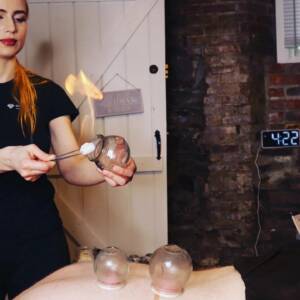What is Scar Tissue?
Whenever the body experiences an injury, the damaged skin and tissues are repaired with collagen, a kind of protein that makes up all the tissues in the body. However, the new collagen does not have the same aligning of its fibers like the original tissue. Instead, it forms a dense and irregular pattern that has the appearance of scar tissue.
While the scar tissue is strong and protects the body, it has a lower blood supply and cannot perform all the functions of normal tissue. It does not develop hair follicles and sweat glands. It is also not as resistant to ultraviolet radiation. The scar tissue is less elastic and thus, restricts movement to some extent. It also impedes the circulation of lymph and blood to the area where it is formed. Where there is an excess of healed collagen fibers, unsightly keloids can also form. Often, there is less of sensation in the scar tissue because of underdeveloped nerve endings.
What are the Kinds of Scar Tissue?
Scar tissue can be of two kinds, internal and external. Whenever there is an injury, the body’s healing mechanism reacts by producing collagen fibers that cover the wound to prevent more damage from occurring. At this stage, there is some amount of movement in the top areas and the new collagen aligns with the old tissue more effectively. But, as healing progresses, the newer collagen moves less easily and as a result, becomes misaligned and hard. Instead of interlinking normally, it takes on the look of adhesions or scars.
External scars are the ones that can be seen on the surface of the skin whereas internal scars are the healed tissues under the surface of the skin. Internal scars can affect other sections of the body because they form a patch-like internal adhesion. This adhesion exerts a pull on all the tissues of the body connected to that section.
How Does Cupping Work on Scar Tissue?
 When the suction cup is placed on the scar tissue and its surrounding areas, the vacuum lifts the scar tissues above and below the skin, essentially pulling them apart so that fresh blood and lymph can circulate freely through them. This improved circulation in turn makes movement easier and as a result, healing of the scars is induced. While healing is always quicker and more effective on newer scars, cupping therapy works as well on old scars in a similar way. In case of C-sections, aside from the surgical scar, many patients experience a swollen sac at the base of the belly. Cupping therapy can eliminate that also.
When the suction cup is placed on the scar tissue and its surrounding areas, the vacuum lifts the scar tissues above and below the skin, essentially pulling them apart so that fresh blood and lymph can circulate freely through them. This improved circulation in turn makes movement easier and as a result, healing of the scars is induced. While healing is always quicker and more effective on newer scars, cupping therapy works as well on old scars in a similar way. In case of C-sections, aside from the surgical scar, many patients experience a swollen sac at the base of the belly. Cupping therapy can eliminate that also.
What is the Procedure?
In case of scar healing, a variation of cupping therapy is used. This technique is called massage cupping or gliding cupping. The therapist begins by first applying a lubricating oil on the section of the skin to be treated. As the vacuumed cup is moved over the skin, it is gently lifted. The patient might experience a slight burning sensation as the tissues are pulled apart, but this settles soon leaving behind no soreness immediately or later. Next, the patient senses a rush of fluid to the suctioned area.
The therapist uses lengthwise motions on and on both sides of the scar. Cupping is also conducted in a horizontal direction using zigzag movements. The healer takes care to use just enough vacuum so that there is suction on the skin. But the cup moves easily also. Since scar tissue has a lowered sensitivity, the patient is asked to let the therapist know if he/she feels any discomfort. Cupping is never conducted for more than 5 to 10 minute sessions at a time. But, after every subsequent treatment, the patient notices a visible lightening in the scar until it is almost imperceptible. Patients taking cupping therapy for stretch marks also experience a tightening of the skin as the stretch marks soften and heal.
Thus, cupping therapy has proved to be highly effective in the treatment of scars and scar tissue. While it may not eradicate the scars completely. It does work to lighten them considerably so that they are barely noticeable.


